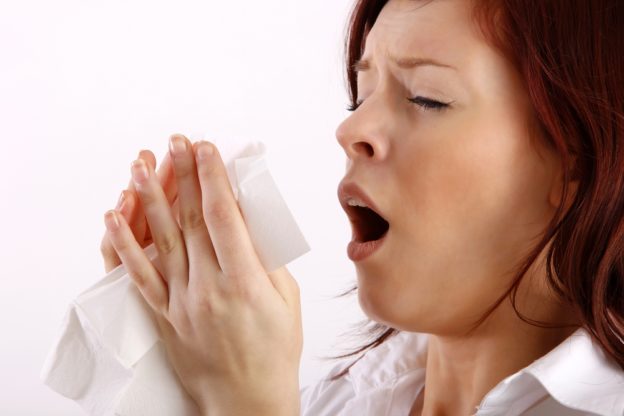

Reduce Workplace Allergies
Since allergic rhinitis (also known as hay fever) affects more than 1 in 10 people in New South Wales, you likely have multiple employees who suffer from allergies if you run a business in Sydney.
Now, the peak months of NSW allergy season (October and November) are fast approaching. If you want to keep staff morale high and sick days low this spring, take steps to reduce allergy symptoms in your workplace.
Here are four easy tips you can follow.
Keep Your AC in Working Order
You probably already know that air conditioning systems are a great way to remove pollen and other allergens from the air. However, if you don’t keep your AC units in working order, they could do more harm to your allergic staff than good.
As spring approaches, inspect your air conditioners for leaks, wear and loose parts (or have a professional inspect them for you). Having any problems fixed as soon as possible will ensure that air flows through the system properly and carries allergens out with it.
You also need to replace your AC filters every three months. Over time, filters become blocked by dust and dander, so they won’t be able to draw pollen out of the air if you don’t switch them out for fresh filters frequently.
Avoid Introducing More Irritants
Many people who suffer from hay fever don’t just react to pollen — they tend to have allergies to other irritants too. Since your employees’ immune systems will already be under stress during allergy season, you should take care to avoid introducing more of these irritants into the air.
You may be surprised to learn that harsh cleaning chemicals are one of the most common workplace respiratory and skin irritants. You may think you’re cleaning away allergens, but the chemicals leave behind VOCs (volatile organic compounds) in the air that can cause allergy symptoms.
Another common source of allergic reactions in the workplace is renovations. From the dust that comes from wood and plaster to the VOCs contained in fresh paint, remodelling can introduce numerous irritants to the air. If possible, try to avoid having work done to your business premises when allergy season is at its peak.
Have Your Carpets and Furniture Cleaned
Pollen generally gets into your workplace through open windows or on the clothes of employees and customers walking in and out of the building. Unfortunately, it doesn’t leave in the same manner. In fact, it often doesn’t leave at all.
Instead, pollen drifts downwards, getting trapped in carpet fibres or on upholstery. This settled pollen quickly turns your workplace into an allergy hotbox and may even make your employees suffer worse symptoms than they do outdoors.
Vacuuming goes a long way in removing allergens from carpets and furniture fabric, but it doesn’t already remove everything. Sometimes, you need professional upholstery and carpet cleaning to get your workplace completely allergy-free.
Without a doubt, Chem-Dry cleaning is one of the best options for removing pollutants from your workplace fibres. The hot carbonating extraction process eliminates an average of 98% of allergens in carpets and upholstery, making your offices a far healthier environment for staff with hay fever.
Plus, once the vast majority of allergens have been removed from carpets and furniture, it will be far easier to keep pollen levels to a minimum with regular vacuuming.
At Davali Chem-Dry, we pride ourselves on using the best equipment and cleaning techniques to eliminate allergens from your carpets, rugs and upholstery. If you want your business to have a productive spring and you’re ready to get on a handle on this season’s workplace allergies, contact us to schedule a cleaning.


